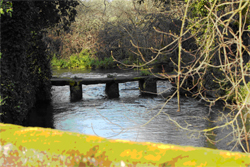
In 2010 the AONB created an A to Z of locally distinctive historic features in the AONB. This was based onthe results of a brief survey which was conducted via the AONB Annual Forum, and a written request to local Woman's Institutes and Parish Councils. The survey asked people in the AONB to identify their favourite local historic feature and say why it was special to them. This list is, of course, in no way comprehensive either in content or in geographical coverage. It is idiosyncratic, personal and local, but it starts to capture heritage that is important locally. Click here for full list.
B for BRIDGES | Bridges over the Nadder and disused water meadow structures Nadder valley. It is special to me because of the evidence of works and systems which are historically important and give us a glimpse of the past. |
|---|---|
| D for DROVEWAYS | The Droves in the Chalke Valley. They are special to me because it provides real evidence of the history of life in south Wiltshire and relationship to Salisbury. |
| M for MILITARY CAP BADGES | Anzac Badge, cut into the chalk on Lamb Down, just outside Codford. It is special to me because It is synonymous with Codford's recent military history, and is also a reminder of our fellowship with others across the world |
| P for PONDS | Ashmore Village Pond. It is special to me because it is in the centre of the village |
| S for SUNKEN LANES | Sunken Lanes in the Melbury Abbas Area.It is special to me because it creates an air of mystery as gateways open up fantastic views of the chalk downland. |
The A to Z forms part of the wider AONB Historic Environment Action Plans



